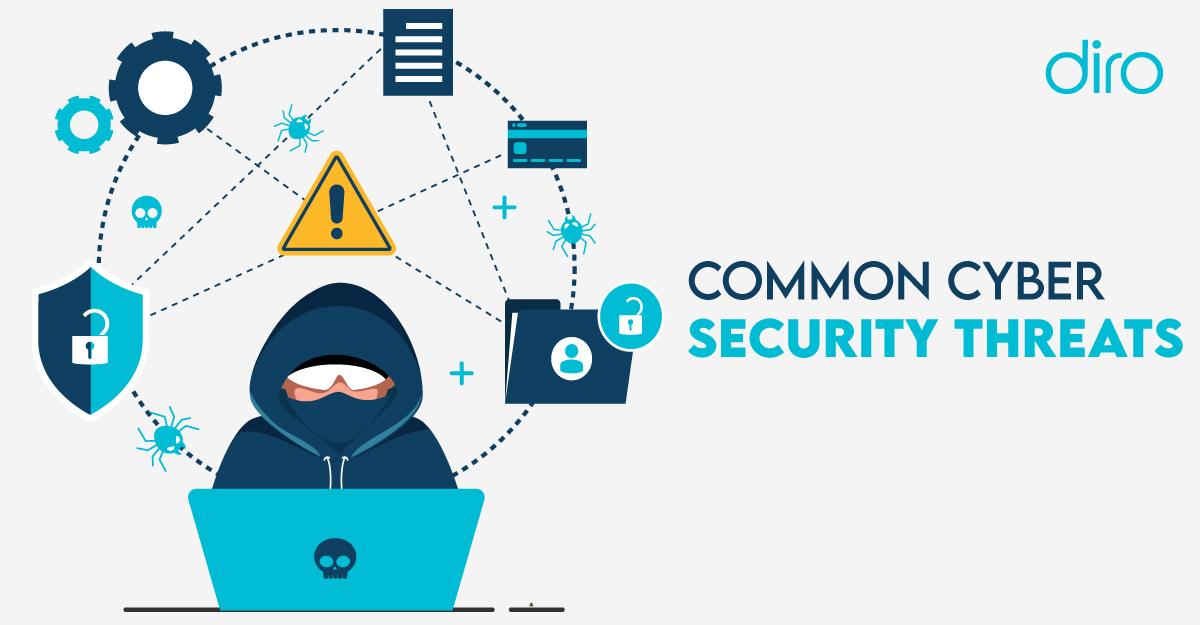Introduction:
Hey ther, fellow website warriors! If you’re using WordPress to power your website (and let’s be honest, who isn’t?), you might want to grab a cup of coffee and settle in. While WordPress is a fantastic platform that makes creating and managing a site a breeze, it also comes with its fair share of vulnerabilities. Cybersecurity threats targeting WordPress sites are on the rise, and if you think your site is too small or insignificant to be a target, think again! From pesky hackers to malicious bots, the digital landscape is filled with lurking dangers that can wreak havoc on your online presence. But don’t worry—understanding these threats is the first step toward defending your site.In this article,we’ll dive into the most common cybersecurity threats that WordPress sites face and provide you with actionable tips to safeguard your digital domain. Let’s empower ourselves with knowledge and keep our sites safe and sound!
Understanding the Rising Cybersecurity threats Targeting WordPress
As WordPress continues to dominate the web progress landscape, the platform has also become a prime target for cybercriminals. Understanding these rising threats is crucial for anyone managing a WordPress site, whether it’s a personal blog or a large corporate website. Here are some of the most prevalent threats currently facing WordPress users:
- Malware Infections: Hackers can inject malicious software into WordPress sites, leading to data breaches and theft of sensitive details.
- Brute Force Attacks: This method involves systematically guessing passwords to gain unauthorized access to admin panels. Strong authentication measures are essential to combat this.
- SQL Injection: Attackers exploit vulnerabilities in themes or plugins to manipulate your database, potentially leading to data loss or corruption.
- Cross-Site Scripting (XSS): This type of attack allows cybercriminals to inject scripts into web pages viewed by users, which can led to stolen cookies or session tokens.
- Outdated Themes and Plugins: Failing to regularly update your site’s components can leave it vulnerable to known exploits.
One of the most alarming aspects of these threats is how they can escalate quickly. as an example, a simple brute force attack can compromise an entire site, especially if weak passwords are used. To illustrate, consider the following table that compares the effectiveness of various security measures against common threats:
| Security Measure | Effectiveness Against |
|---|---|
| Strong Passwords | Brute Force Attacks |
| regular Updates | Malware, SQL Injection |
| Firewalls | Cross-Site Scripting |
| Security plugins | Various Threats |
To mitigate the risks associated with these threats, WordPress site owners should adopt a proactive approach to security.Here are some best practices:
- Implement Two-Factor Authentication: Add an extra layer of security by requiring a second form of verification.
- Regular Backups: Ensure your data is consistently backed up to recover quickly in case of an attack.
- Use Security Plugins: Leverage specialized tools designed to detect and prevent attacks before they happen.
- Limit Login Attempts: Restricting the number of failed login attempts can thwart brute force attacks.
- Monitor User Activity: Keeping an eye on user behavior can help identify suspicious activity early on.
By understanding the various cybersecurity threats targeting WordPress and implementing effective security measures, site owners can protect their digital assets and maintain the trust of their users. The digital landscape may be fraught with dangers,but with the right knowledge and tools,WordPress users can navigate it safely.
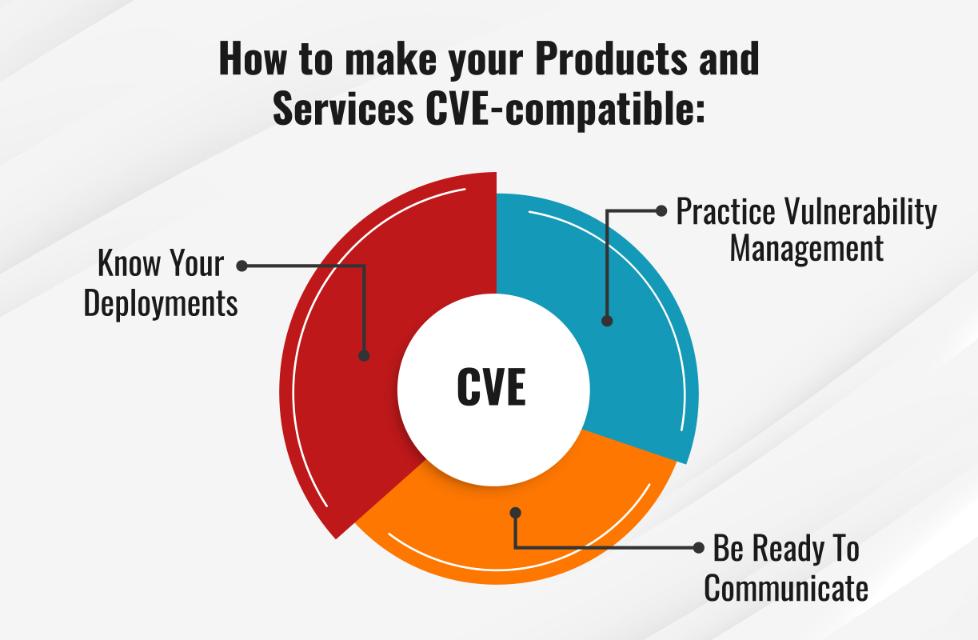
Common Vulnerabilities in WordPress Sites You Should Be Aware Of
When it comes to WordPress, the popularity that makes it a top choice for website builders also attracts malicious actors looking to exploit common weaknesses. Understanding these vulnerabilities is crucial for maintaining a secure site. Here are some of the most frequent issues to keep an eye on:
- Outdated Plugins and Themes: Running old versions of plugins or themes can leave your site exposed. Developers regularly release updates to patch security flaws,so make sure to keep everything up to date.
- Weak Passwords: A simple yet effective entry point for attackers is weak passwords. Encourage the use of complex passwords and consider implementing two-factor authentication for an extra layer of security.
- Insecure Hosting environment: The security of your site is also contingent on the quality of your hosting provider. Ensure that you choose a reputable host that prioritizes security features like firewalls and regular backups.
- SQL Injection: This occurs when an attacker inserts malicious SQL code into your database queries. Always validate and sanitize user inputs to mitigate this risk.
Beyond these common vulnerabilities, there are also specific threats that can target WordPress sites:
| Threat Type | Description |
|---|---|
| Cross-Site Scripting (XSS) | Allows attackers to inject scripts into web pages viewed by users, compromising their data. |
| Brute Force Attacks | Automated attempts to guess passwords and gain unauthorized access to your site. |
| Malware Infections | Malicious software can be uploaded to your site, leading to data theft or site defacement. |
It’s essential to conduct regular security audits and vulnerability assessments to identify and rectify any issues. Also, employing security plugins can add extra layers of protection to your wordpress site. The goal isn’t just to survive an attack but to build a fortress around your online presence.
Ultimately, staying informed about these vulnerabilities and actively working to mitigate them can save you a lot of headaches in the long run. Your website’s security should never be an afterthought, but rather an integral part of your overall strategy.

The Role of Plugins in WordPress Security Risks
When it comes to wordpress, plugins are often hailed as the magic wands that enhance functionality and improve user experience. However, they can also be a double-edged sword, introducing meaningful security vulnerabilities if not managed properly. With over 58,000 plugins available in the official WordPress repository alone,ensuring they don’t compromise your website’s security is paramount.
Manny plugins are developed by independent creators who may not adhere to stringent security practices. This can lead to issues such as:
- Outdated Software: Plugins that are not regularly updated can become obsolete and vulnerable to exploitation.
- code Quality: Poorly written code can create loopholes that hackers exploit.
- Unverified Sources: Plugins from unreliable sources may contain hidden malware or backdoors.
Additionally, the sheer volume of active plugins on a WordPress site can increase the attack surface. Each plugin you add potentially introduces new vulnerabilities. to illustrate,consider the following table which outlines common security risks associated with popular plugin types:
| Plugin Type | Common Risks |
|---|---|
| SEO Plugins | Exposure of sensitive data through improper configurations. |
| Form builders | Potential for SQL injection attacks if not sanitized correctly. |
| Security Plugins | Over-reliance can lead to complacency, neglecting other security hygiene practices. |
To mitigate these risks, it’s essential to follow best practices when managing WordPress plugins:
- Regularly Update: Always keep your plugins updated to the latest versions to patch known vulnerabilities.
- Audit Your Plugins: Periodically review the plugins you have installed; remove any that are unnecessary or outdated.
- Research Before Installing: Check ratings,reviews,and update history before adding new plugins to your site.
Incorporating these security measures will significantly reduce the likelihood of falling victim to cybersecurity threats. By being proactive and vigilant about the plugins you choose and maintain, you can create a safer and more secure WordPress environment for yourself and your users.
Why Your Theme choices Matter in Preventing Cyber Attacks
When it comes to securing your WordPress site,the choices you make regarding themes can significantly impact your vulnerability to cyber threats. A poorly coded or outdated theme can act as a gateway for attackers, making it essential to choose wisely.Here are several reasons why your theme selections are critical in maintaining robust cybersecurity:
- Code Quality: High-quality themes are typically well-reviewed and have been tested for security flaws. Poorly coded themes can introduce vulnerabilities that hackers exploit.
- Regular Updates: Themes that receive regular updates from their developers are likely to address any emerging security issues. If a theme is abandoned or rarely updated, it can become a target for cybercriminals.
- support and Community: A well-supported theme with an active community can provide timely fixes and security patches.If a theme lacks support, you may find yourself on your own in the event of a breach.
- Reputation and Reviews: Choosing themes from reputable developers with positive reviews can help you steer clear of unreliable options that may compromise your site’s security.
Additionally, some themes come with built-in security features such as firewalls, malware scanners, and spam protection. These features can serve as an additional layer of defense against potential threats. here’s a rapid comparison of theme types based on their security characteristics:
| Theme Type | Security Features | Update Frequency |
|---|---|---|
| Premium Themes | High; often include built-in security | Regular updates |
| Free Themes | Varies; often limited security | Inconsistent updates |
| Custom Themes | Can be high; depends on the developer | Depends on the development team |
Furthermore, opting for a theme that adheres to the latest coding standards and practices can significantly reduce your risk profile. many themes today are built with security in mind, leveraging best practices like sanitized inputs and prepared statements to mitigate SQL injection risks. Always check for themes that implement:
- Secure Authentication: Ensure your theme supports secure user authentication protocols.
- Data Sanitization: Themes should properly sanitize user inputs to prevent malicious code execution.
- HTTPS Support: A theme that supports SSL certificates ensures data encryption, providing an additional layer of security.
your choice of theme is more than just a design decision; it’s a cornerstone of your site’s cybersecurity strategy.By prioritizing secure and well-maintained themes, you can significantly reduce your exposure to cyber threats, keeping your WordPress site safe and secure.
Essential Cybersecurity Practices for WordPress Site Owners
As a WordPress site owner, safeguarding your website should be your top priority. With the ever-increasing number of cyber threats, it’s crucial to adopt robust cybersecurity practices to protect your online assets. here are some essential steps you can implement to bolster your site’s defenses:
- Regular Backups: Ensure that you maintain regular backups of your website. Utilize plugins like UpdraftPlus or BackupBuddy to automate this process. Store backups in multiple locations, including cloud storage, to guarantee recovery options.
- Keep Everything Updated: Regularly update your WordPress core, themes, and plugins. Updates often include security patches that address vulnerabilities. Set a reminder or enable automatic updates to stay ahead.
- Strong Password Policies: Use strong, unique passwords for your admin, database, and FTP accounts. Consider utilizing a password manager to generate and store complex passwords securely.
- Two-Factor Authentication: Implement two-factor authentication (2FA) for an added layer of security. This ensures that even if your password is compromised, unauthorized access is significantly more challenging.
- Limit Login Attempts: Protect your login page from brute-force attacks by limiting login attempts. Plugins like Limit Login Attempts Reloaded can help you control access and monitor failed login attempts.
- Secure Your Hosting Environment: Choose a reputable hosting provider that prioritizes security. Look for features like firewalls, DDoS protection, and regular malware scanning.
Additionally, consider implementing a Web Application Firewall (WAF). A WAF acts as a shield between your website and incoming traffic, filtering out malicious requests before they reach your site.Services like cloudflare or Sucuri can provide this layer of protection.
Another critical measure is to regularly monitor your website for any suspicious activity. Utilize security plugins such as Wordfence or Sucuri Security that offer real-time monitoring, vulnerability scanning, and firewall protection to keep your site secure.
Quick Reference: Key Cybersecurity Practices
| Practice | Description |
|---|---|
| Regular Backups | Automate and store backups in multiple locations. |
| Update Systems | Keep wordpress, themes, and plugins up-to-date. |
| Strong Passwords | Create complex, unique passwords. |
| Two-Factor Authentication | Add an extra layer of security during login. |
| Limit Login Attempts | Prevent brute-force attacks on login pages. |
| WAF Implementation | Filter malicious requests before they reach your site. |
By adopting these essential cybersecurity practices, you can significantly reduce the risk of falling victim to cyber threats. A proactive approach not only protects your website but also builds trust with your visitors,ensuring a safe browsing experience for everyone.
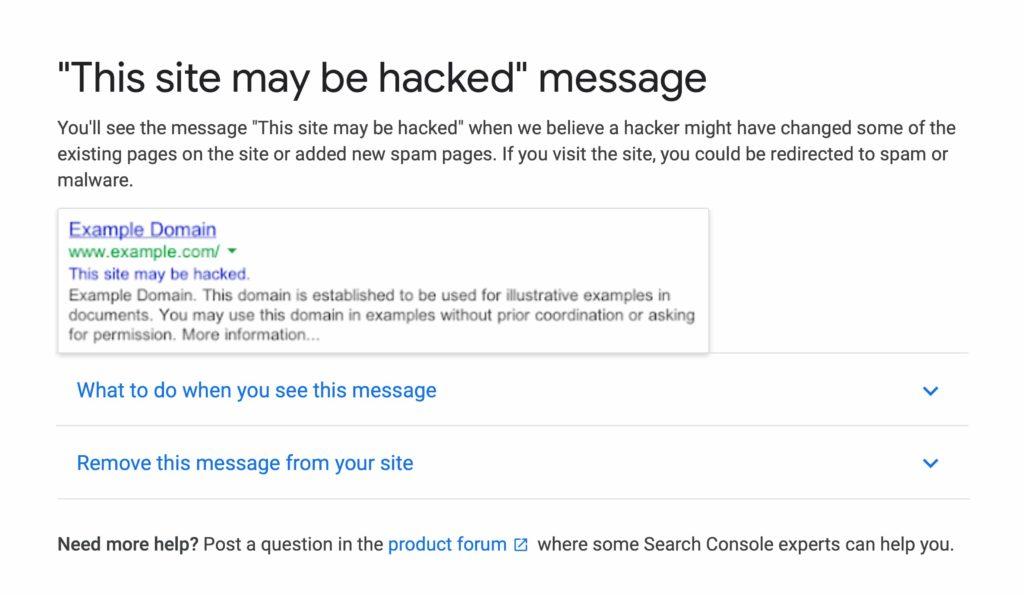
how to Recognize the Signs of a Compromised WordPress Site
Recognizing the signs of a compromised WordPress site is crucial for maintaining the integrity and security of your online presence. Many website owners may not realise their site has been breached until it’s too late. Here are some common indicators that should raise alarm bells:
- Unwanted Changes: if you see changes to your content, themes, or settings that you did not authorize, it’s a red flag. Malicious actors often alter your site to include spammy content or redirect users elsewhere.
- Slow Performance: A sudden drop in your site’s performance could indicate that your site is under attack or infected with malware. If pages are loading slowly or your site frequently crashes,investigate further.
- Unexpected User Accounts: Check for any new user accounts that you didn’t create. Hackers may add themselves as administrators to gain control over your site.
- Suspicious Login Activity: Keep an eye out for multiple failed login attempts or logins from unfamiliar locations.This behavior can suggest that someone is trying to brute-force their way into your admin panel.
It’s also essential to monitor for unusual traffic patterns. If you notice a sudden spike in traffic, especially from foreign IP addresses, your site might be experiencing a DDoS attack or being targeted for data scraping. Use analytics tools to track your audience and identify any discrepancies.
If your website is blacklisted by search engines or flagged by security tools, act quickly. Blacklisting often occurs after a site has been compromised and can severely impact your site’s reputation and SEO rankings. Regularly check your site using tools like google Search Console for any security alerts.
| Sign of Compromise | Description |
|---|---|
| Unauthorized Changes | Alterations made without your consent. |
| Performance Issues | Site loading slowly or crashing. |
| New User Accounts | Accounts created without your knowledge. |
| Unusual Login Patterns | Abnormal login attempts from strange locations. |
Lastly,regularly scanning your site with security plugins can help catch vulnerabilities early. Tools such as Wordfence or Sucuri can provide insights and alerts for potential threats, making them essential for proactive security measures. remember, safeguarding your WordPress site starts with awareness and vigilance.

The Importance of Regular Updates and Patches for Your WordPress
Keeping your WordPress site updated is not just a routine task; it’s a vital component of maintaining your online security. Regular updates and patches can significantly reduce your website’s vulnerability to cyber threats.Each WordPress update often includes crucial security enhancements that address newly discovered vulnerabilities, making your site less appealing to hackers.
Here are some key reasons why consistent updates are essential:
- Bug Fixes: Updates frequently enough contain fixes that address bugs that could be exploited by hackers.
- Improved Security: Each update helps patch known security holes, thereby reducing the risk of unauthorized access.
- Enhanced Features: Regular updates often come with new features that improve site functionality and user experience.
- Compatibility: Keeping your themes and plugins updated ensures they work harmoniously with the latest version of WordPress.
Neglecting to update your WordPress site can have dire consequences. As an example, outdated plugins are notorious for being gateways for hackers. According to a recent study, over 70% of accomplished WordPress hacks exploit outdated themes and plugins. This statistic highlights the critical need for vigilance in maintaining your website’s integrity.
to exemplify the impact of updates, let’s take a look at a simple table that outlines the potential risks associated with neglecting updates:
| neglecting Updates | Potential Risks |
|---|---|
| Outdated Themes | Vulnerability to theme-based attacks |
| Old Plugins | Increased risk of malware infections |
| Ignoring Core Updates | Loss of compatibility and increased exposure to exploits |
In addition to enhancing security, keeping your WordPress site updated can also improve its performance. New updates often come with optimizations that can make your site faster, leading to better user experiences and improved SEO rankings. After all, a site that runs smoothly will likely retain visitors and convert leads more effectively.
treating updates and patches as a priority rather than an afterthought is crucial.By proactively managing your WordPress updates,you not only fortify your site against potential threats but also enhance its overall functionality. Remember, in the world of cybersecurity, staying ahead of the curve is not just favorable; it’s essential.
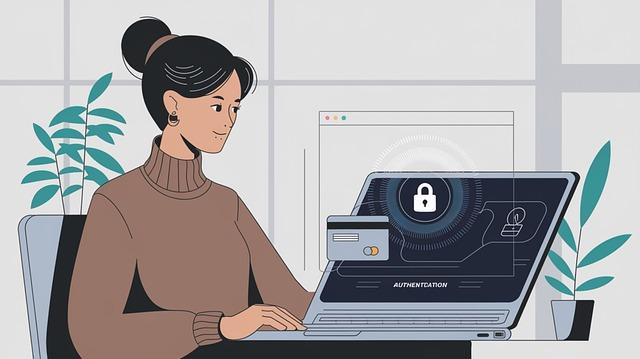
Strengthening User Authentication to Protect Your WordPress Site
In today’s digital landscape, safeguarding your WordPress site is paramount. One of the most effective ways to fortify your defenses is by enhancing user authentication processes. This is especially critical, as cybercriminals constantly seek out vulnerabilities in sites that fail to implement robust measures.
Here are some practical strategies to strengthen user authentication:
- Implement Two-Factor Authentication (2FA): By requiring a second form of verification, such as a text message code or authentication app, you can add an extra layer of security to your login process.
- Enforce Strong Password Policies: Encourage users to create complex passwords that combine letters, numbers, and symbols. Consider using plugins that require regular password changes.
- Limit Login Attempts: Protect your site from brute force attacks by restricting the number of failed login attempts before locking out a user temporarily.
- Utilize CAPTCHA: Adding a CAPTCHA challenge can deter automated login attempts, making it harder for bots to access your site.
- Regularly Update User Roles: Regularly review and update user permissions to ensure that only necessary personnel have access to sensitive areas of your site.
To visualize the impact of these strategies, consider the following table illustrating the effectiveness of various authentication methods:
| Authentication Method | Effectiveness | Implementation Difficulty |
|---|---|---|
| Two-Factor Authentication | High | moderate |
| Strong Password Policies | Moderate | Low |
| Limit Login Attempts | High | Low |
| CAPTCHA | Moderate | Low |
| Regular User Role Updates | High | Moderate |
Additionally, consider using security plugins that provide complete authentication features. these plugins can automate many of the processes mentioned above, making it easier for you to maintain a secure environment.
By taking these steps to enhance user authentication, you’re not just protecting your wordpress site; you’re also fostering a sense of trust among your users. They will appreciate knowing that their data is safe and that you are committed to their security.remember, the cost of prevention is always less than the price of a breach.
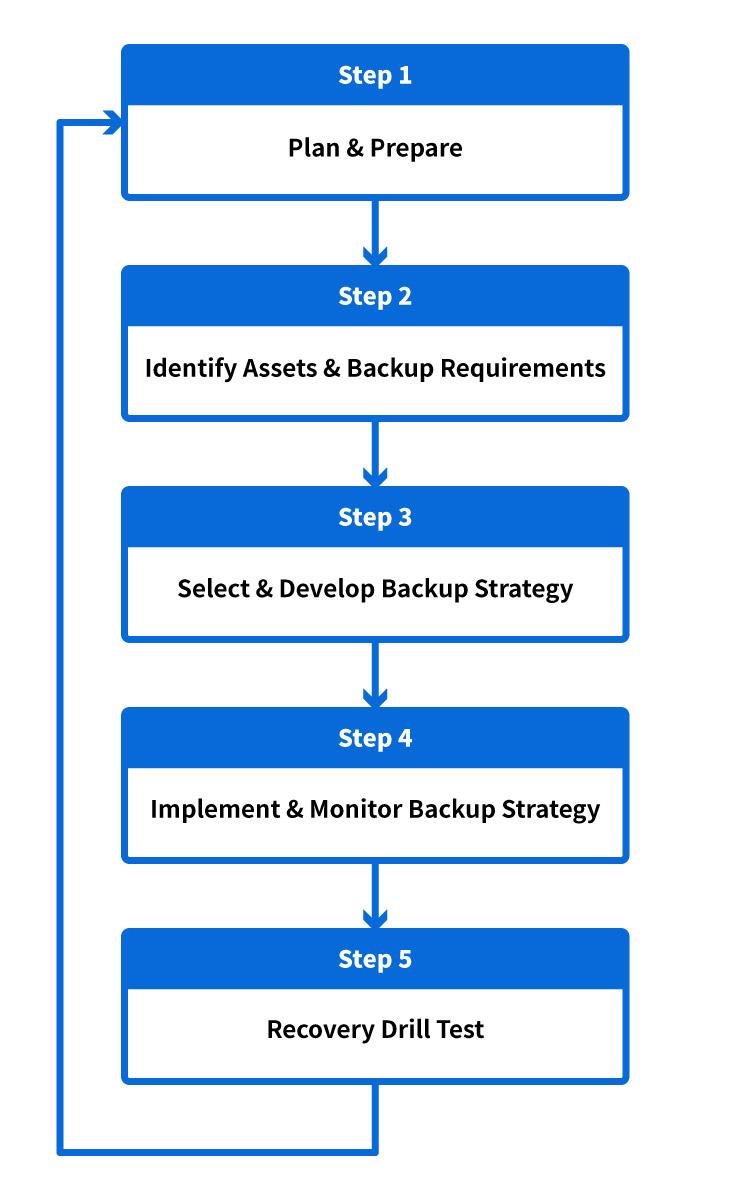
Implementing a Robust Backup Strategy for Peace of mind
When it comes to safeguarding your wordpress site against the myriad of cybersecurity threats lurking in the digital landscape, a well-structured backup strategy is your best ally. The reality is, even the most secure websites can fall victim to attacks, malware, or data loss due to unforeseen circumstances. Having a reliable backup plan not only ensures data integrity but also provides you with peace of mind, allowing you to focus on growing your online presence.
Here are some essential components to consider when implementing a robust backup strategy:
- Frequency of Backups: Determine how frequently enough you need to back up your data. For dynamic sites with regular updates, daily backups might potentially be essential, while static sites may require weekly backups.
- Types of Backups: Utilize a combination of full, incremental, and differential backups. This approach allows for quicker recovery options and optimized storage.
- Storage Solutions: Choose secure and reliable storage methods. Options include cloud storage, external hard drives, or hosting services that provide automated backup solutions.
Along with the components above, automating your backup process can significantly reduce the risk of human error. Many WordPress plugins offer automated backup solutions that can be customized to fit your specific needs.Here are a few popular plugins to consider:
| Plugin Name | Key Features | Cost |
|---|---|---|
| UpdraftPlus | Automated backups, cloud storage integration, restore options | Free / Premium available |
| BackupBuddy | Full site backups, migration features, scheduled backups | Starts at $80 |
| VaultPress | Real-time backups, security scanning, easy restoration | Starts at $39/year |
Testing your backups is just as crucial as creating them.Regularly perform test restores to ensure you can recover your site quickly and efficiently in the event of a cyber incident. This proactive approach not only enhances your backup strategy but also builds confidence in your recovery process.
remember that no backup strategy is foolproof without proper security measures in place. Regularly update your WordPress core, themes, and plugins to mitigate vulnerabilities and complement your backup efforts. A multi-layered approach to security,including firewalls and malware scanning,paired with your solid backup plan,will give you the ultimate peace of mind in protecting your online assets.
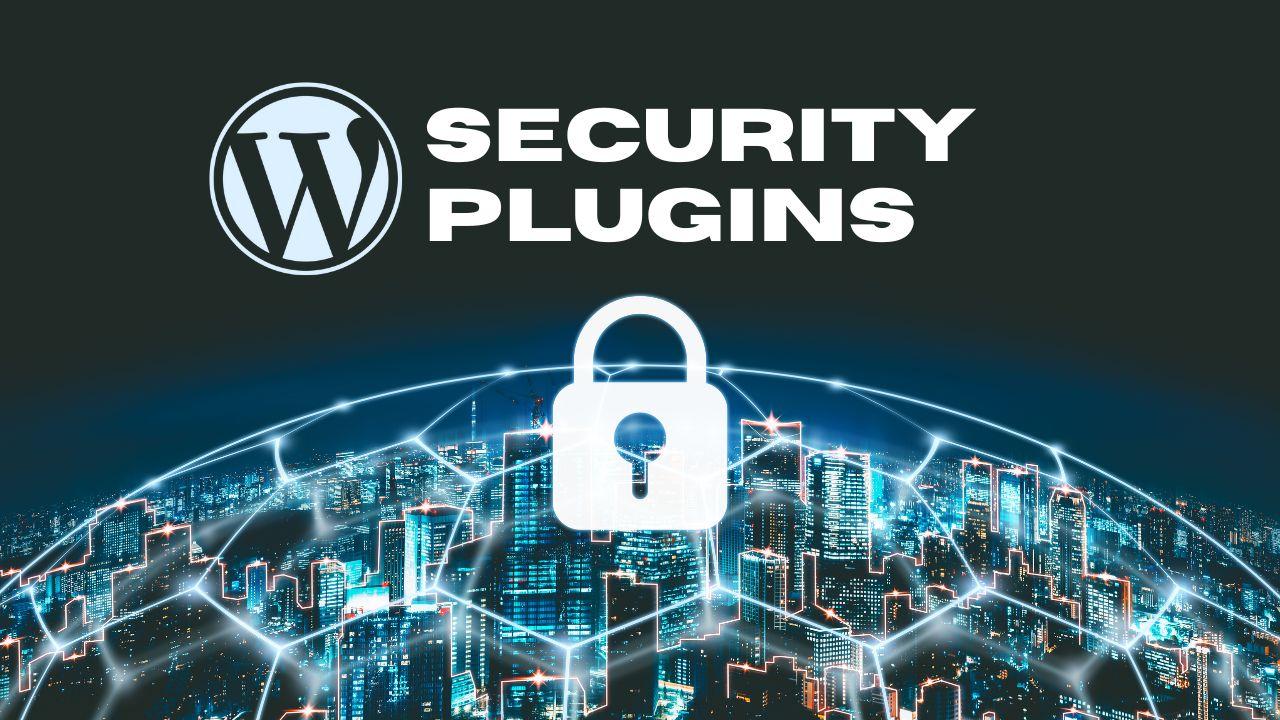
The Power of Security Plugins: What to Look For
When it comes to fortifying your WordPress site against cyber threats, security plugins play a pivotal role. These tools act as your first line of defense, helping to shield your website from a variety of attacks and vulnerabilities. However, not all plugins are created equal. Here’s what to consider when choosing the right security plugin for your site.
Comprehensive Malware Scanning: Look for plugins that offer in-depth malware scanning capabilities. A robust security plugin should:
- Perform regular scans to detect vulnerabilities.
- Provide real-time protection against malware and malicious code.
- Offer a history of previous scans for reference.
Firewall Protection: An effective security plugin should include a firewall to filter out harmful traffic before it reaches your site. Consider a plugin that features:
- Application-layer firewall settings.
- Brute force attack prevention.
- IP blocking to prevent known offenders from accessing your site.
User-pleasant Interface: A complex plugin can often lead to confusion and poor security practices. Choose a security plugin that boasts:
- An intuitive dashboard for easy navigation.
- clear instructions and recommendations for security hardening.
- Customizable settings to cater to your specific needs.
Regular updates: Cyber threats evolve, and so should your security measures. Opt for plugins that are:
- Frequently updated to address new vulnerabilities.
- Backed by active support communities or responsive developers.
- Compatible with the latest WordPress versions.
Backup Solutions: In the event of a security breach, having a backup can save you from extensive losses. Ensure the plugin you choose:
- Offers automated backups to restore your site easily.
- Allows for scheduled backups and stores them securely.
Integrations and Compatibility: Your security plugin should seamlessly integrate with other essential plugins and themes to provide a holistic defense. Make sure it:
- Works well with SEO,caching,and e-commerce plugins.
- Provides compatibility with your current WordPress theme.
Investing time in selecting the right security plugin can yield significant benefits, safeguarding your WordPress site against the ever-evolving landscape of cyber threats.the right choice not only protects your content but enhances the overall trustworthiness of your site among users.

Educating Your Team on Cybersecurity Best Practices
In today’s digital landscape,every team member plays a vital role in safeguarding your WordPress site from cybersecurity threats. A well-informed team is your first line of defense against potential attacks. Here are some best practices to educate your team:
- Understand common Threats: Familiarize your team with the various types of threats targeting WordPress sites, such as malware, phishing, and brute force attacks. Knowledge is power, and understanding these threats helps in recognizing suspicious activity.
- Password Management: Encourage the use of strong, unique passwords for all accounts related to your site. Implement password managers and educate your team on the importance of not reusing passwords across different platforms.
- Regular Updates: emphasize the necessity of keeping WordPress core, themes, and plugins up to date. Teach your team how to check for updates and the importance of applying them promptly to patch vulnerabilities.
- Data Backup Protocols: Make sure your team understands the importance of regular backups. Create a protocol for backing up data at regular intervals and ensure everyone knows how to restore it in case of an attack.
- Secure Access: Educate your team on the importance of secure access methods, such as using HTTPS and implementing two-factor authentication to add an extra layer of protection.
To effectively convey these practices, consider holding regular training sessions and workshops. Interactive sessions can engage your team more effectively than standard presentations. You can use real-world examples of WordPress sites that faced cyber threats and how they overcame them. This not only makes the information relatable but also highlights the importance of being vigilant.
additionally, create a simple and easily accessible guide that outlines these best practices. Here’s a quick reference table that you can share with your team:
| Practice | Description |
|---|---|
| Password Management | Use unique, complex passwords for each account. |
| Regular Updates | Keep WordPress core and plugins updated. |
| Data Backup | Regularly back up data and know how to restore it. |
| Secure Access | Implement HTTPS and two-factor authentication. |
encourage open communication within your team about cybersecurity concerns. If someone notices something suspicious or has a question, they should feel comfortable speaking up. By fostering a culture of vigilance and responsibility, you’ll not only protect your WordPress site but also empower your team to be proactive in combating cyber threats.
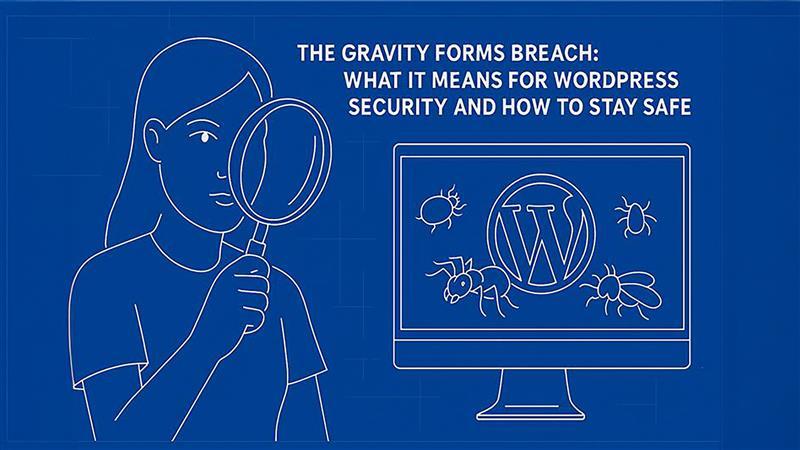
Taking Action: Steps to Recover from a WordPress Security Breach
Experiencing a security breach can be a daunting situation,but taking immediate action is crucial to mitigating damage and restoring your WordPress site. Here are essential steps to guide you through the recovery process:
- Identify the Breach: Start by determining how the breach occured. Check your website’s logs, look for unfamiliar user accounts, and examine any recent changes made to your site.
- Secure Your Hosting Account: Change your hosting account passwords, and ensure your email accounts tied to your website are secured. If necessary, contact your hosting provider for additional support.
- Update Everything: Ensure your WordPress core, themes, and plugins are updated to their latest versions. This often includes security patches that can help prevent future breaches.
- Scan for Malware: Use a reliable security plugin to run a thorough malware scan. Tools like Wordfence or Sucuri can definately help identify malicious code or compromised files.
- Restore from Backup: If you have a recent backup of your website, consider restoring it to a point before the breach occurred. This can help eliminate any lingering issues.
- Clean Your Site: Manually check and clean your database and files. Look for suspicious files or code inserts that might have been overlooked during the scan.
- Inform Users: If user data may have been compromised, inform your users promptly. Openness is key in maintaining trust, and you may also need to take specific steps to protect their information.
Once you’ve taken immediate steps to recover your site, focus on strengthening your security measures to prevent future incidents. Consider implementing the following:
| Security Measure | Description |
|---|---|
| Two-Factor Authentication (2FA) | Add an extra layer of security by requiring a second form of identification when logging in. |
| Regular Backups | Set up automatic backups to ensure you can quickly restore your site if needed. |
| Security Plugins | Utilize security plugins that offer firewalls, malware scanning, and login attempt limiting. |
| Strong Passwords | Encourage the use of strong, unique passwords for all user accounts. |
By prioritizing these steps,you can rebuild your site stronger than ever and limit the risk of future breaches.Remember, cybersecurity is an ongoing process; staying informed and proactive will help safeguard your online presence.
Frequently Asked Questions (FAQ)
Q&A: Cybersecurity Threats That Target WordPress Sites
Q1: Why should I be concerned about cybersecurity threats to my WordPress site?
A: Great question! WordPress powers over 40% of the internet,making it a prime target for hackers.If your site gets compromised, it can lead to data breaches, loss of sensitive information, and damage to your reputation. Plus, your visitors’ trust can quickly evaporate, leading to lost customers and revenue.
Q2: What are the most common cybersecurity threats that WordPress sites face?
A: Some of the biggest threats include malware infections, brute force attacks, and SQL injection attacks. Malware can inject harmful scripts into your site, brute force attacks involve automated attempts to guess your password, and SQL injections manipulate your database to steal information or modify content. It’s a wild world out there!
Q3: How can I tell if my WordPress site has been compromised?
A: Look out for unusual activity! If your site is running slower than usual, displaying strange pop-ups, or if you notice unauthorized changes to your content, these could be signs of a compromise.Additionally, if your site suddenly gets blacklisted by search engines or your hosting provider, that’s a major red flag.
Q4: Can I really protect my WordPress site from these threats?
A: Absolutely! While you can’t eliminate every risk, there are many effective steps you can take. Regularly update your WordPress core,themes,and plugins,use strong passwords,implement two-factor authentication,and consider a security plugin to monitor and defend against threats.
Q5: Is it worth investing in a security service for my WordPress site?
A: Definitely! Investing in a security service can save you time, stress, and money in the long run. A good security service provides real-time monitoring, malware scanning, and immediate response to threats. It’s like having a security guard for your digital space!
Q6: What’s the best way to start securing my WordPress site today?
A: Start with the basics! Change your passwords to strong, unique ones, install a reputable security plugin, and back up your site regularly. You’d be surprised how these simple steps can significantly enhance your security posture.
Q7: What should I do if my WordPress site is hacked?
A: First, don’t panic! Immediately disconnect your site from the internet to prevent further damage. Then, contact your hosting provider for assistance and hire a professional if needed. Restore from your latest backup and change all passwords to prevent future breaches.
Q8: Do I need technical skills to secure my WordPress site?
A: Not at all! Many security measures can be implemented with just a few clicks, thanks to user-friendly plugins and hosting services. Plus, there are plenty of resources and guides available to help you through the process. You’ve got this!
Q9: How often should I review my website’s security?
A: Think of it like an annual health check-up! Regularly reviewing your security—at least once a month—is a good practice. This includes updating plugins, checking for unusual activity, and reassessing your overall security strategy.
Q10: Why is ongoing education important for WordPress site owners?
A: Cyber threats are constantly evolving. By staying informed about the latest trends and vulnerabilities, you can adapt your security measures accordingly.Knowledge is your best defense, so make sure you’re always learning!
If you want to keep your WordPress site safe and secure, it’s crucial to stay proactive and informed.Don’t wait for a cyber incident to take action—start securing your site today!
In Conclusion
As we wrap up our deep dive into the world of cybersecurity threats targeting WordPress sites, it’s clear that staying informed and proactive is essential. The digital landscape is constantly evolving, and with it comes a myriad of risks that can jeopardize your website’s security and, ultimately, your online reputation.
But don’t let that overwhelm you! By understanding the threats—like malware, brute force attacks, and phishing—you can take concrete steps to fortify your defenses.Implementing reliable security plugins, regularly updating your themes and plugins, and practicing good password hygiene are just a few of the ways you can shield your site from potential attacks.
Remember, cybersecurity is not just a tech issue; it’s about safeguarding your hard work and protecting your audience. so, take these insights to heart and make cybersecurity a priority for your WordPress site.After all, a secure website isn’t just a smart move—it’s a necessary step towards building trust and credibility with your users.
Stay safe out there, and happy blogging! If you have any questions or need further assistance, feel free to reach out. your site’s security is worth the effort!

